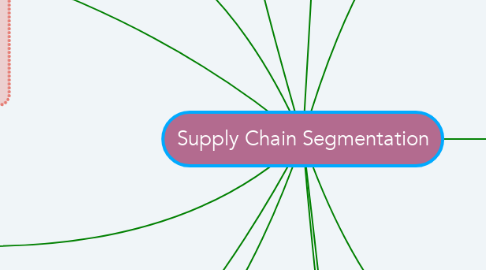Supply Chain Segmentation
by Monica Lizbeth Quezada Lopez


1. Allocation can occur at different levels of product and customer hierarchies.
2. Perform regular demand and cost-to-serve analysis
2.1. Provides the information needed to tailor service agreements and supply chain policies
2.2. Raise the overall profitability of the portfolio
2.3. Provide reliable and suitable service.
3. Implement differentiated demand policies in core functions
3.1. Demand signals can come in the form of orders, forecasts, and safety stock, and that they can come from different channels
3.2. The demand priorities must be driven by the overall segmentation strategy that is tied to the service/profitability framework
3.3. The systems must be easy to configure and be able to adapt to changing priorities.
4. Implement regular total-landed-cost sourcing analysis
4.1. Companies have integrated workflows, procurement, and supply chain organizations to incorporate total-landed-cost analysis into engineering and procurement decisions.
4.2. Transportation costs, including fuel surcharges
4.3. Expediting costs
4.4. Handling costs
4.5. Inventory carrying costs
4.6. Inventory obsolescence costs
4.7. Duties and taxes
4.8. Product rework and damage costs
4.9. Customer service penalties
5. Implement differentiated customer replenishment programs
5.1. Enterprise customers might be served through a combination of configure-to-order and build-to-stock strategies.
5.2. Segmentation provide differentiated service based on customer/product dynamics.
5.3. A trend in retail replenishment is the increasing use of analytical information based on point-of-sale data tobdrive orders from the retailer to the manufacturer.
6. Implement differentiated supplier replenishment programs
6.1. It should be segmented based on supplier/component dynamics.
6.2. Combination of owned and outsourced factories as well as a combination of shorter-lead-time, nearshore capacity and longer-lead-time, offshore capacity.
6.3. It must be synchronized with the ordering and customer replenishment programs on the front end of the supply chain.
7. Implement differentiated allocation and order promising
7.1. Are critical areas for implementing policies that enable segmented and profitable customer service strategies.
7.2. Allocation is the process of reserving inventory and/or capacity for certain customers or groups of customers
7.3. Order promising is the process of providing a date by which a product will be delivered
8. Implement a business optimization center for continuous learning
8.1. Establishing, implementing, and monitoring segmentation policies, and then continuously learning as such policies are executed over time.
8.2. Responsible for the workflows associated with deploying these policies to the appropriate functional business processes.
8.3. Reports to a high-level executive
8.3.1. Chief operating officer (COO)
8.3.2. Chief executive officer (CEO).
